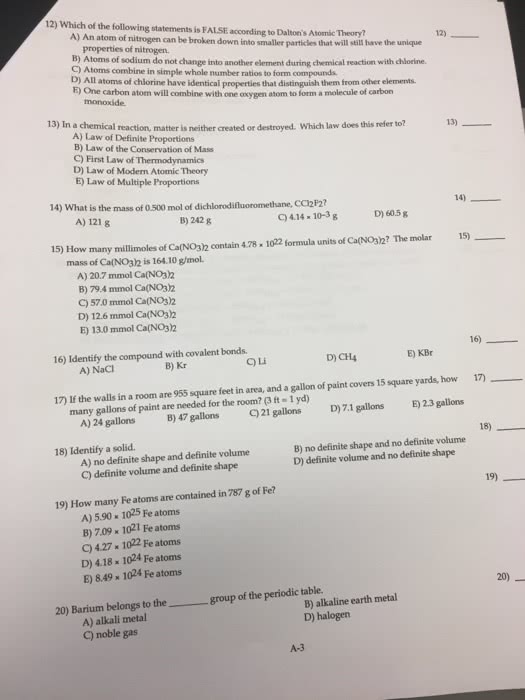CHM 121 Lecture Notes - Lecture 2: Atomic Mass, Atomic Number, Mass Number
Document Summary
In a chemical reaction matter is neither created nor destroyed. Total mass of reactants = total mass of products. Cannot make more of something or get rid of any. 7. 0g na + 12. 0g cl2 = 19. 0g nacl. Daltons atomic theory: dalton proposed a theory of matter based on it having unlimited, indivisible particles to explain the law of definite and multiple proportions. Each element is composed of tiny, indestructible parts called atoms. All atoms of a given element have the same mass and other properties that distinguish them from atoms of other elements (proven incorrect) Atoms combine in simple-whole number ratios to form molecules of compounds. In a chemical reaction, atoms of one element cannot change into atoms of another element. They simply rearrange the way they are attached: his theory set the foundation for stoichiometry. Neutral atom- # of electrons = # of protons: an atom is a small nucleus inside of a cloud of electrons (stadium metaphor)




